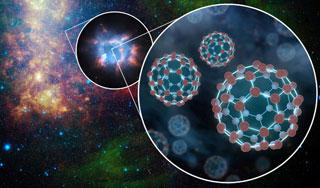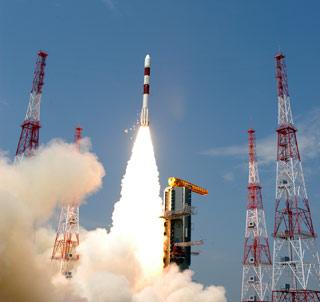
An infrared photo of the Small Magellanic Cloud taken by Spitzer Telescope. Photo: NASA/ JPL
PASADENA (BNS): For the first time, NASA's Spitzer Space Telescope has found intriguing, miniature-soccer-ball-shaped molecules, known as 'Buckyballs' in interstellar space.
Buckyballs, also known as fullerenes, are soccer-ball-shaped molecules consisting of 60 linked carbon atoms.
The buckyballs which are apparently made in chemistry labs, where first found in 1985. In July 2010, Spitzer was able to provide the first confirmed proof of their existence in space, according to a NASA and JPL report.
"It turns out that buckyballs are much more common and abundant in the universe than initially thought. Spitzer had recently found them in one specific location, but now we see them in other environments,” Astronomer Letizia Stanghellini of the National Optical Astronomy Observatory in Tucson, Arizona, said.
The new research shows that all the planetary nebulae in which buckyballs have been detected are rich in hydrogen.
Scientists have speculated in the past that buckyballs, which can act like cages for other molecules and atoms, might have carried substances to Earth, which have started life. Evidence for this theory comes from the fact that buckyballs have been found in meteorites carrying extraterrestrial gases.
Spotting buckyballs in interstellar space also reveals that relatively big molecules can persist and maybe even form in the diffuse, unforgiving voids between the stars.
 Previous Article
Previous Article Next Article
Next Article













The Indian Air Force, in its flight trials evaluation report submitted before the Defence Ministry l..
view articleAn insight into the Medium Multi-Role Combat Aircraft competition...
view articleSky enthusiasts can now spot the International Space Station (ISS) commanded by Indian-American astr..
view article